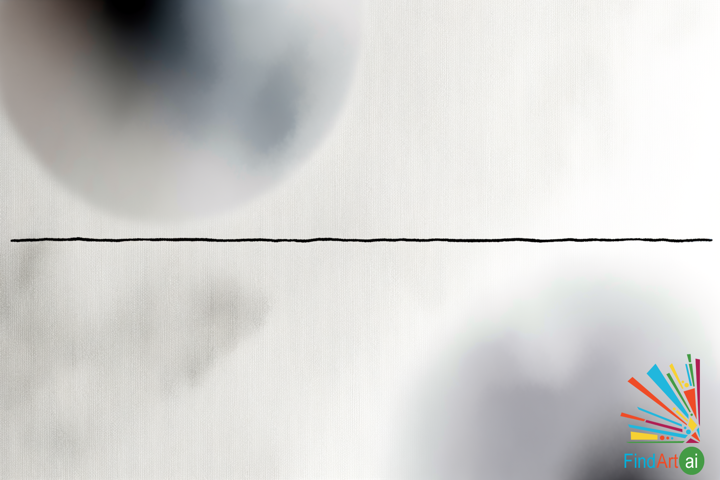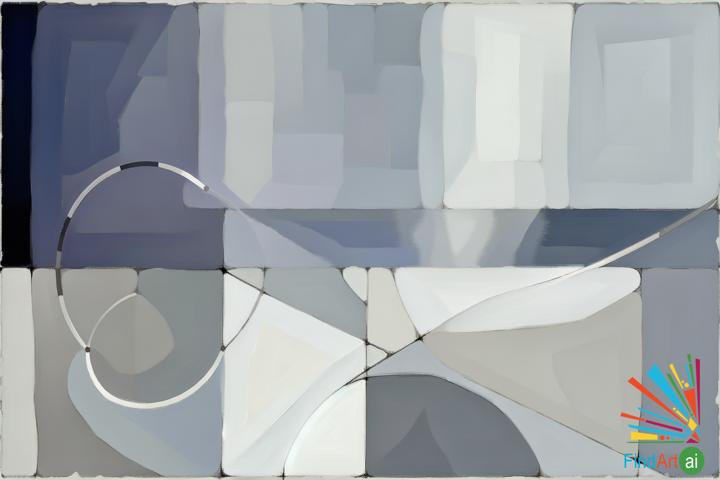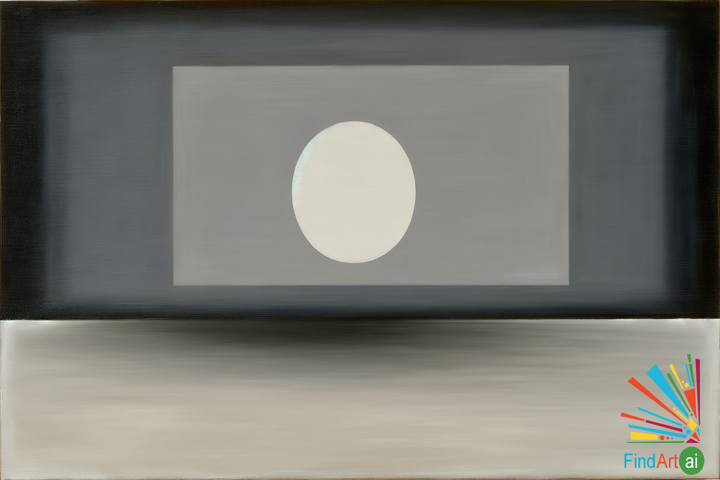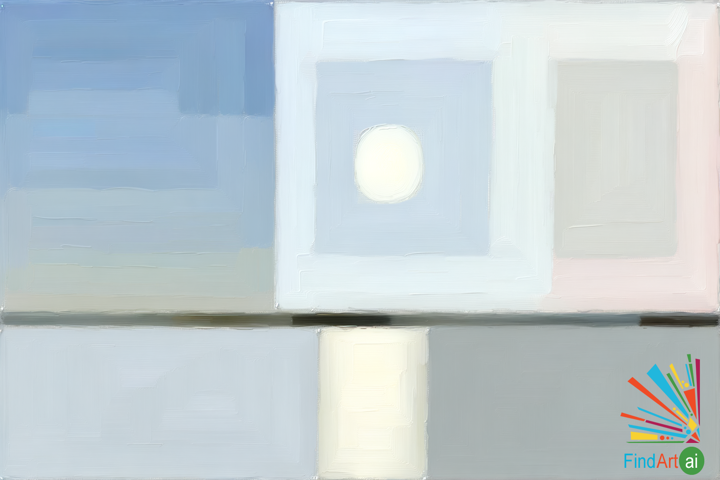
Minimalism Paintings with Purity and Clarity Theme
Minimalism paintings with a Purity and Clarity theme emphasize simplicity, reduction, and the essence of form, rejecting complexity and decoration in favor of a clear, focused visual experience. Emerging in the mid-20th century, Minimalism strips art down to its most fundamental elements, often using geometric shapes, a limited color palette, and an absence of texture or narrative. The goal is to create a sense of purity and clarity by eliminating distractions, focusing on the intrinsic properties of color, shape, and space.
Key Characteristics of Minimalist Paintings with Purity and Clarity Theme
- Reduction of Form
- Minimalist artists simplify shapes and forms, often reducing them to basic geometric patterns like squares, rectangles, and lines. This reduction strips away any unnecessary details, highlighting the essential structure of the painting.
- Example: Ellsworth Kelly’s Red Blue Green (1963), which consists of flat, vibrant color fields in simple shapes, focusing solely on the interaction between these forms.
- Limited or Monochromatic Color Palette
- Minimalist paintings frequently use a restricted or monochromatic color scheme. This restraint emphasizes the purity of the artwork, allowing viewers to focus on the subtle variations in tone, light, and space rather than being distracted by complex colors.
- Example: Agnes Martin’s Untitled (1960s), where subtle, grid-like patterns emerge from pale, neutral tones, creating a sense of quiet clarity and meditative focus.
- Emphasis on Space and Composition
- Minimalist works often emphasize the relationship between shapes and the negative space around them. The simplicity of the composition allows the viewer to experience the balance and harmony between elements, creating a sense of order and calm.
- Example: Donald Judd’s Untitled series (1960s), where precise, repetitive forms are arranged with meticulous attention to spacing, inviting contemplation of their spatial relationships.
- Absence of Narrative or Emotion
- Minimalist paintings avoid storytelling, symbolism, or emotional expression. Instead, they focus on the objective qualities of the artwork itself—color, line, form—creating a direct, unembellished visual experience.
- Example: Frank Stella’s Black Paintings (1958-60), which are composed of parallel bands of black paint, devoid of representational content or narrative, emphasizing the purity of the form itself.
- Flatness and Uniformity
- Minimalist artists often avoid texture or visible brushstrokes, opting for smooth, flat surfaces that create an even, uniform appearance. This approach removes any sense of the artist’s hand or emotional input, enhancing the clarity and objectivity of the painting.
- Example: Ad Reinhardt’s Abstract Painting (1960-66), featuring nearly black monochromatic canvases with subtle shifts in tone, offering a purely visual experience free from distractions.
- Precision and Repetition
- Precision in form, line, and composition is central to Minimalism. Some artists use repetition to create rhythm or pattern, reinforcing the clarity and purity of the visual experience.
- Example: Sol LeWitt’s Wall Drawing series, which features precise, repeated geometric shapes and lines that emphasize order, structure, and simplicity.
- Focus on Materiality
- Minimalist painters often emphasize the material nature of the artwork itself, such as the flatness of the canvas or the purity of the paint. This material focus reinforces the clarity and objectivity of the artwork, directing attention to its physical properties rather than its representational qualities.
- Example: Robert Ryman’s white-on-white paintings, which highlight the texture and surface of the paint and canvas, presenting a pure, uncluttered visual experience.
Common Themes in Minimalist Paintings with Purity and Clarity
- Simplicity of Design
- Minimalist paintings focus on the purity of design, reducing visual elements to their most basic forms. This simplicity reflects a desire for clarity and order, where nothing is extraneous, and the viewer is left with only what is essential.
- Example: Josef Albers’ Homage to the Square series, where overlapping squares of color create a simple yet powerful exploration of space, light, and form.
- Neutrality and Objectivity
- Minimalist artists aim to remove personal expression, focusing on the objective qualities of the artwork itself. This neutrality allows the viewer to engage with the work in a direct, unmediated way, appreciating its clarity and simplicity.
- Example: Carl Andre’s 144 Magnesium Square (1969), where the artist arranges metal plates in a grid on the floor, emphasizing the material and spatial qualities of the work without any added meaning or symbolism.
- Contemplative Space
- Minimalist paintings often create a serene, contemplative space for the viewer, where the simplicity and clarity of the work invite meditation or quiet reflection. The absence of clutter or narrative allows for a more profound engagement with the artwork’s fundamental elements.
- Example: Agnes Martin’s With My Back to the World (1997), where delicate, barely visible lines on a white canvas evoke a sense of calm and clarity, inviting introspection.
- Emphasis on Perception
- Minimalist paintings encourage the viewer to engage with the artwork in a direct, sensory way, focusing on the perception of light, color, and space. By reducing the visual field to its bare essentials, the artist invites a deeper, more focused experience of seeing.
- Example: James Turrell’s Skyspaces, though primarily architectural, share minimalist values in their focus on pure perception of light and space.
Essence of Stillness: A Minimalist Painting Celebrating Tranquility and Simplicity
"Essence of Stillness" is a minimalist painting featuring a serene white canvas with a singular blac...
Essence of Silence: A Minimalist Painting Celebrating Purity and Calm Introspection
"Essence of Silence" is a minimalist painting that embodies purity and clarity. Using a palette of w...
Essence of Simplicity: Contemplative Minimalism with Geometric Elegance
"Essence of Simplicity" is a minimalist painting featuring a solitary geometric shape—such as a circ...
Essence of Clarity: A Minimalist Canvas Celebrating Serenity and the Power of Silence
"Essence of Clarity" captures serenity and simplicity on canvas. A single horizontal line divides th...
Essence of Clarity: A Minimalist Canvas Merging Worlds and Inviting Tranquil Reflection
"Essence of Clarity" features a vast white canvas symbolizing tranquility and endless possibilities,...
Essence of Clarity: Minimalist Painting Capturing Tranquil Morning's Serene Purity
"Essence of Clarity" is a minimalist painting that embodies the serene purity of a tranquil morning....






